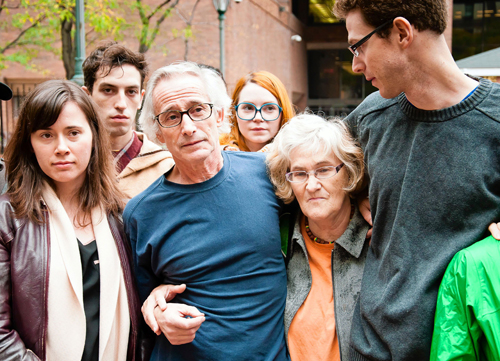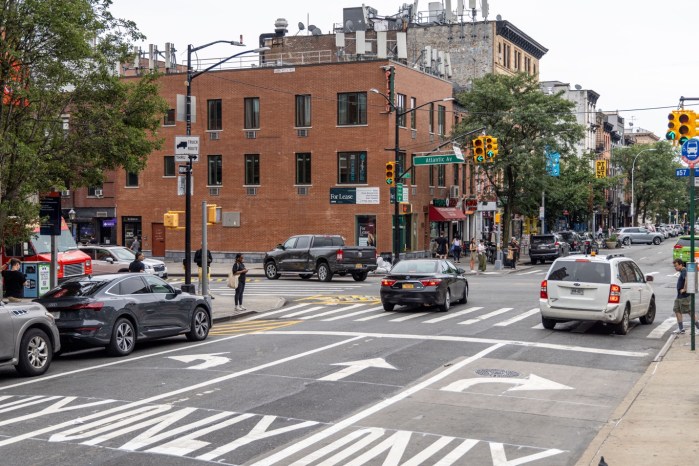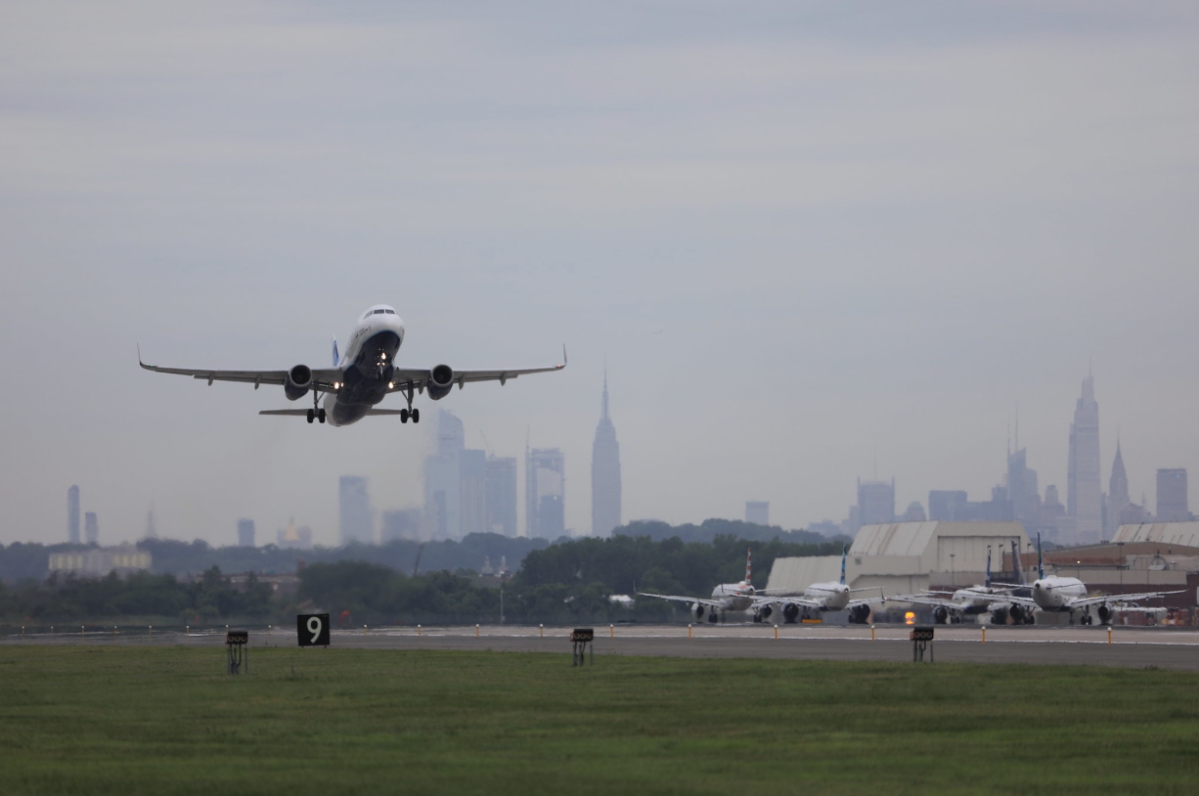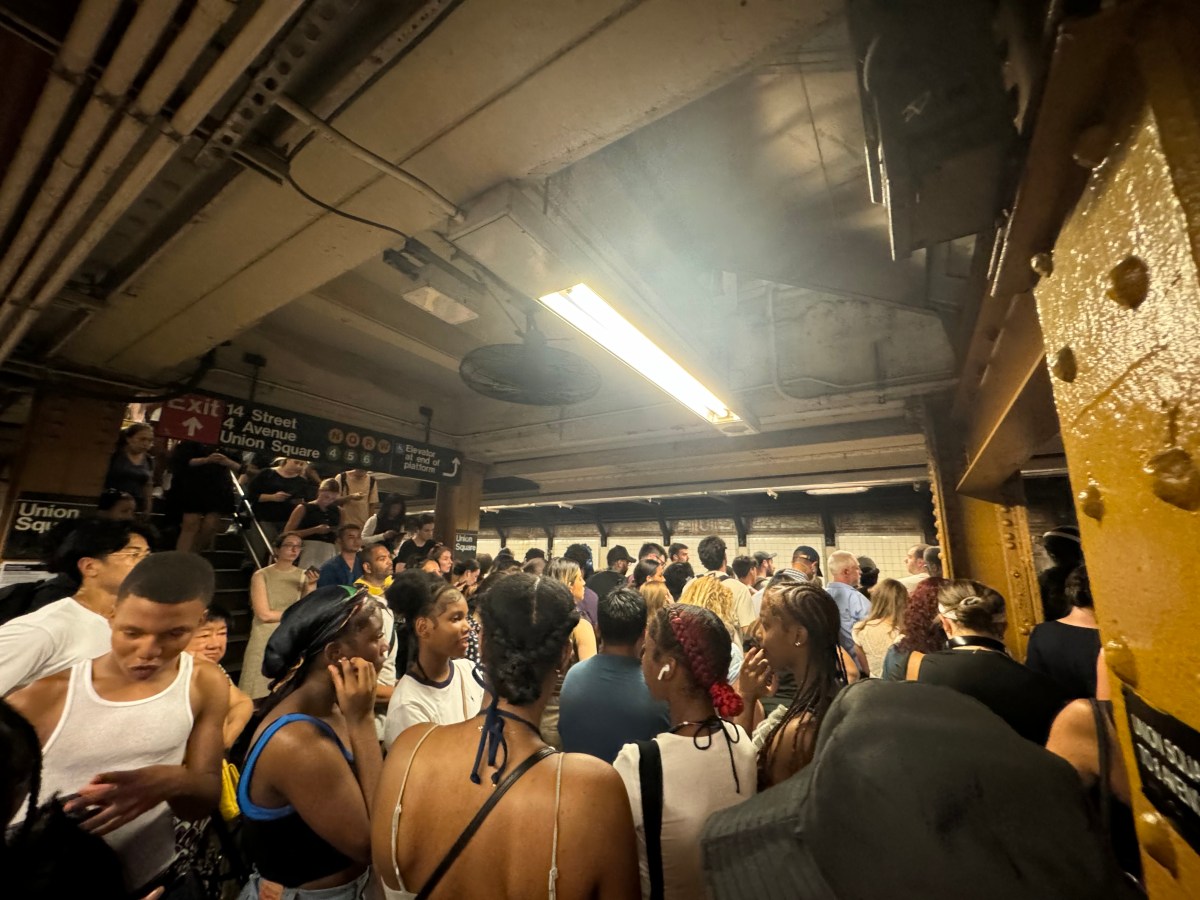The dangerous conditions that led to the death of cyclist Mathieu Lefevre remain as hazardous now as they were one year ago today, when a hit-and-run driver killed the 30-year-old artist and ignited a street safety movement that sought to change the city’s traffic enforcement culture.
Lefevre’s death sparked outcry from his family and cyclists citywide, who claim the NYPD botched the initial investigation and stonewalled them in their quest to find out what exactly happened and how the trucker who ran him over while making a right turn on Meserole Street from Morgan Avenue — then left the scene — only received a couple of traffic summonses for the fatal collision.
One year later, Lefevre’s mother is still asking the same questions she did when she received news of her son’s death.
“My family would like to know what actually did happen that night on that street,” said Erika Lefevre. “We have the right to have that information.”
The investigation
The crash cast a spotlight on the NYPD’s accident investigation squad — but despite widespread criticism, police continue to pursue traffic cases much the same as they did before, according to Lefevre family lawyer Steve Vaccaro.
The family and their attorney have blasted police for incorrectly telling the press that Lefevre ran a red light, wrongly reporting the direction the trucker was headed, and failing to collect crucial evidence, including photos of the cyclist’s blood and bike paint from the front bumper, because accident investigators used a broken camera.
The 19-detective unit took heat from publications ranging from transit blogs to the New York Times for being understaffed and appearing unable or unwilling to investigate collisions between motorists, cyclists, and pedestrians “if there is not ‘a likely to die,’ or a death.”
Councilman Steve Levin (D–Williamsburg) introduced two traffic-taming bills and three resolutions in the aftermath of Lefevre’s death — one of which would dramatically increase the number of trained accident investigators by putting five such cops in every precinct.
But none of that legislation has become the law yet.
“We are working on this diligently and daily,” said Levin. “It is a lengthy process.”
Activists say the NYPD has not altered its approach to traffic investigations, its allocation of resources, or its commitment to address such serious accidents.
And in a city where traffic collisions cause more deaths than guns, records indicate that some precincts have gone months without issuing a single speeding ticket.
“I do not believe the NYPD is committed to addressing this issue; they’ve given no evidence of it,” said Councilman Brad Lander (D–Park Slope).
The NYPD did not return requests for comment on this article.
The documents
The Lefevre family fought hard for access to case records — but their battle has done little to change the NYPD’s approach to records disclosure.
Police initially refused to provide detailed information about the case to Lefevre’s family and denied a Freedom of Information Law request filed by them, until the victim’s relatives sued the department in December.
The NYPD eventually released the information, quashing their suit, though a judge recently said police had “needlessly delayed handing over the documents and other materials.”
The family also has a civil suit pending against the truck driver, the company that employed him, and its owner, and they remain hopeful that an investigation by the Brooklyn District Attorney’s office will shed more light on their son’s death.
Levin’s Lefevre-inspired legislation would, among other things, call on the NYPD to file more thorough reports for all accidents involving motor vehicles and cyclists. But that legislation remains in the works.
The streets
The roadway where Lefevre lost his life looks much as it did just after midnight on Oct. 19, 2011, when a trucker failed to signal before turning into the passing cyclist. And bike boosters say it’s just as dangerous.
Transportation advocates argue that industrial areas with growing residential populations — such as Bushwick and East Williamsburg — are only getting more hazardous as drivers compete with an influx of pedestrians and cyclists.
Earlier this month, rock band drummer Terrence Connor was struck and killed by a hit-and-run motorist while biking on a similarly industrial stretch of Metropolitan Avenue about ten blocks away.
“In that neck of the woods, trucks are driving as if the road belonged to them — because it used to,” said Juan Martinez, the general counsel for Transportation Alternatives. “What are we going to do about these types of neighborhoods?”
There are no plans to put a bike lane on Morgan Avenue or Meserole Street.
The aftermath
Lefevre’s legacy lives on one year after the crash, both through the art the Edmonton-native created — which is currently on display in a memorial at Galerie Division in Montreal opening today — and through the street safety activism his death sparked.
“Mathieu’s tragic death helped to galvanize a movement for these changes,” said Lander. “I do hope that a year from now we’ll be able to point to not just a movement, but concrete systemic changes.”
But for now, the only tangible change brought on by the horrific accident is that cyclists are well aware the cards are stacked against them, said the Lefevre family’s lawyer.
“What’s occurred is that families of crash victims have learned that you can’t just sit back and assume that the police are going to investigate crashes,” said Vaccaro.
Reach reporter Eli Rosenberg at erosenberg@cnglocal.com or by calling (718) 260-2531. And follow him at twitter.com/emrosenberg.
























